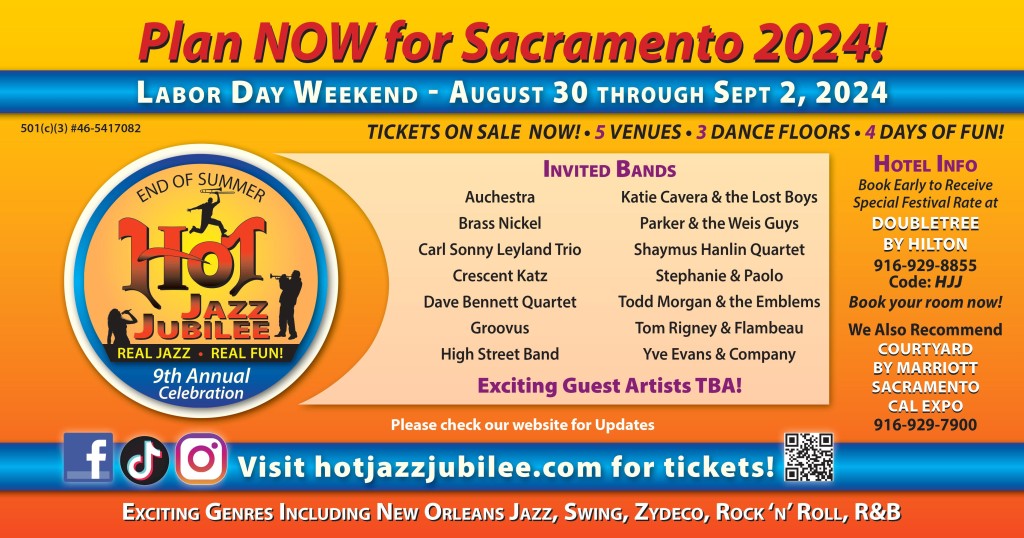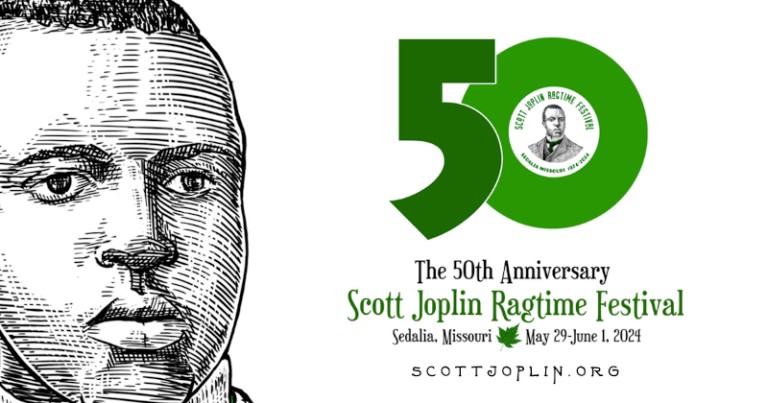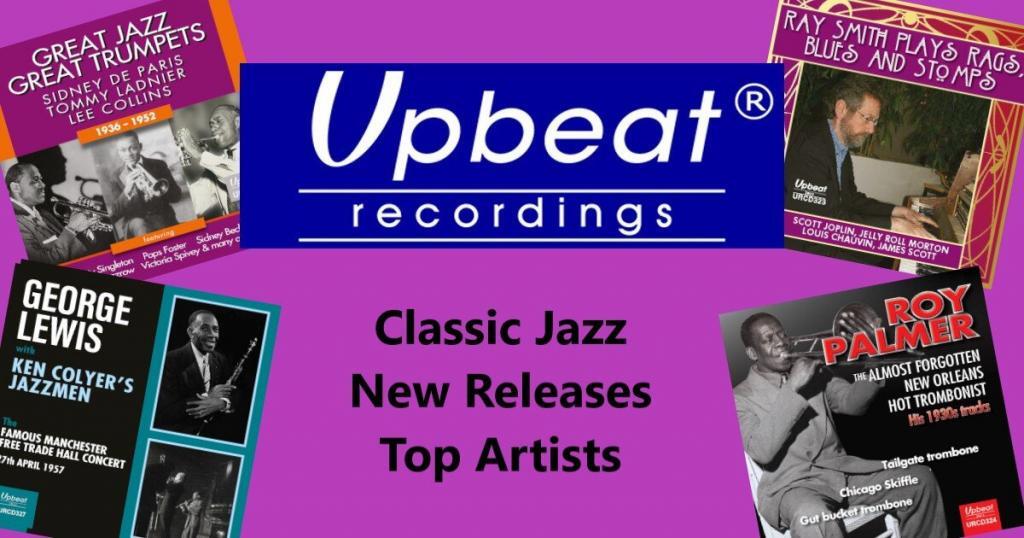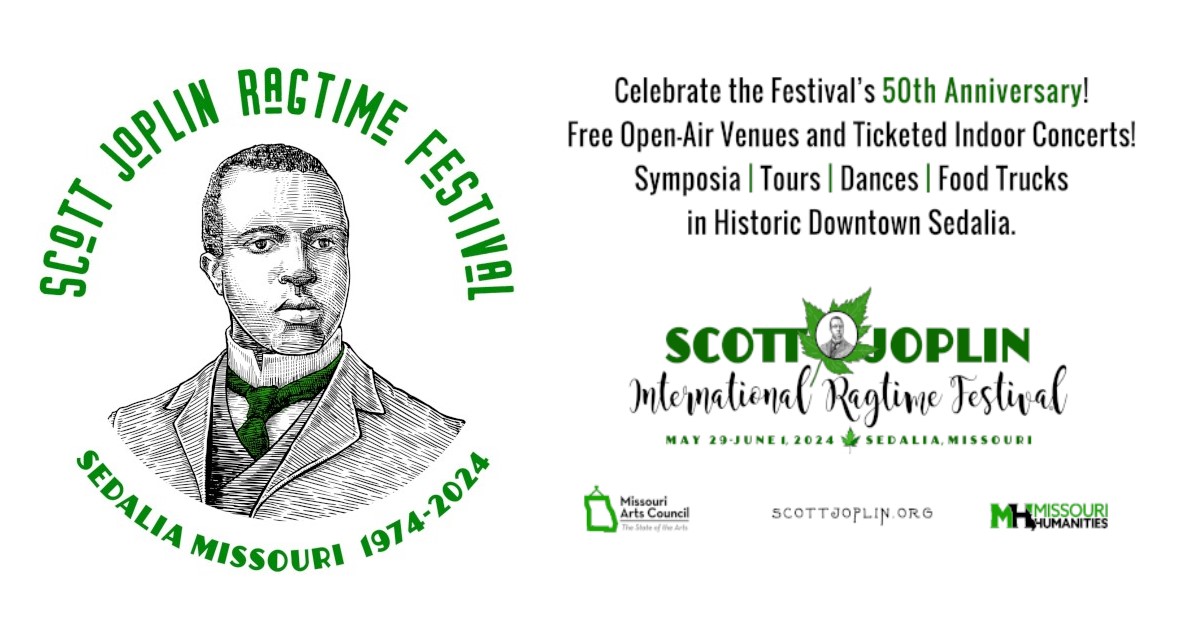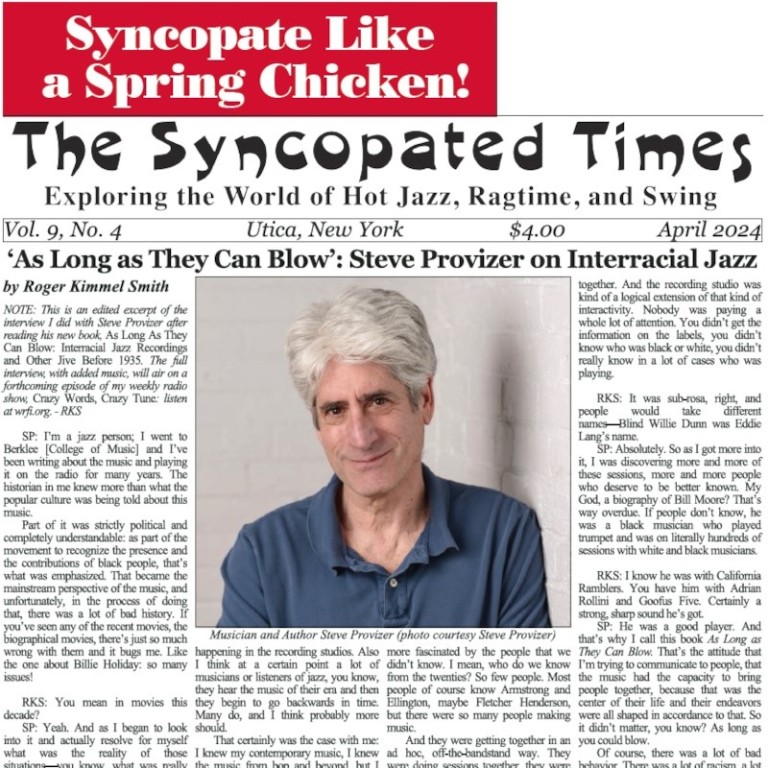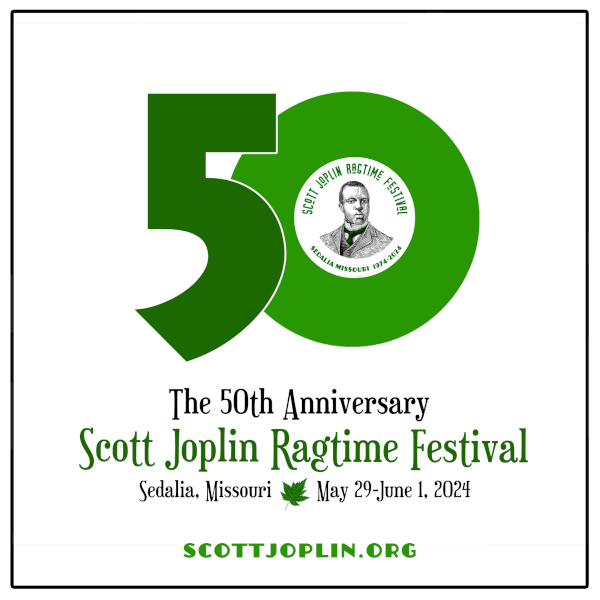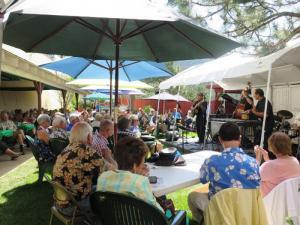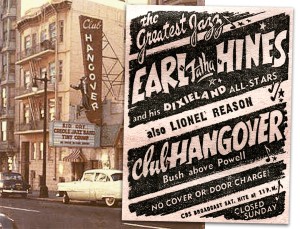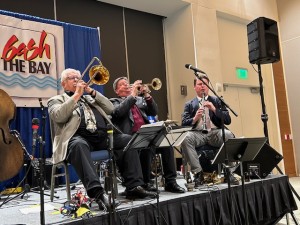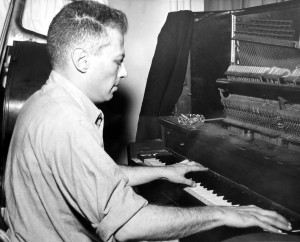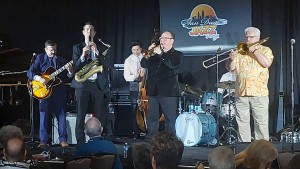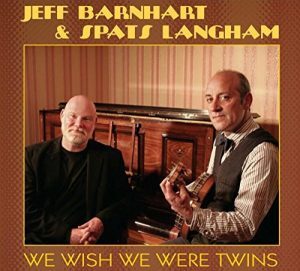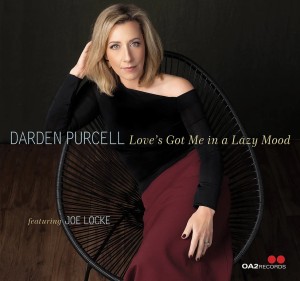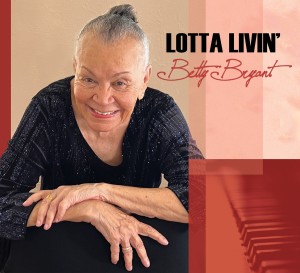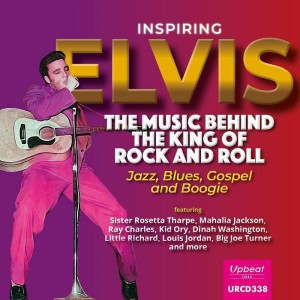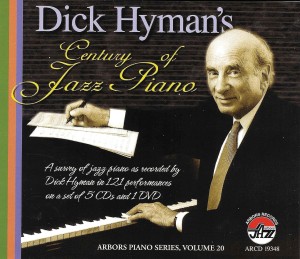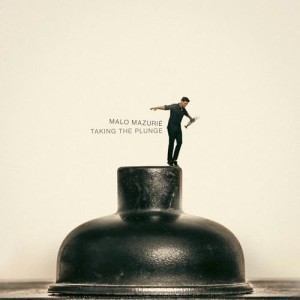KEN GRAYSON MILLS
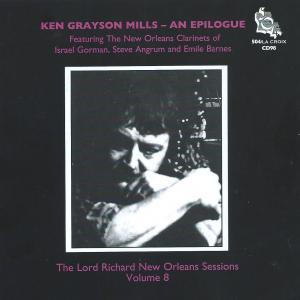 Ken Grayson Mills (1937-2004) is a name that should be known by anyone interested in New Orleans jazz of the 1960s. He helped found Preservation Hall in 1961 and on around 13 LPs for his Icon label during 1960-67 he documented the playing of a variety of New Orleans musicians, some of whom might not have been recorded at all if it were not for him.
Ken Grayson Mills (1937-2004) is a name that should be known by anyone interested in New Orleans jazz of the 1960s. He helped found Preservation Hall in 1961 and on around 13 LPs for his Icon label during 1960-67 he documented the playing of a variety of New Orleans musicians, some of whom might not have been recorded at all if it were not for him.
Ken Grayson Mills – An Epilogue is a historically significant CD that features three of Mills’ projects, all focusing on clarinetists. Israel Gorman’s Pontchartrain Pals was a trio featuring clarinetist Gorman and a pair of British musicians (trumpeter Jim Holmes and banjoist John Coles). Gorman made other recordings in 1954 and during 1961-63 but these ten performances (none previously out on CD and two formerly unreleased) feature him in his most intimate setting. He mostly harmonizes quite well behind Holmes’ lead, takes concise solos, and his interaction with the trumpeter (with the only backing being by the banjoist) is delightful.
Steve Angrum only made three sessions in his life, a date with Percy Humphrey in 1953 and two from just a few months before his death in 1961 including three duets with banjoist George Gusenon. Nine titles had been issued from the Aug. 6, 1961, session with a band featuring either Punch Miller or Kid Sheik Cola on trumpet. This release has “Ice Cream” (not previously out on CD) plus four previously unreleased performances from that date including two brief run-throughs of numbers made to get the recording balance right. Angrum, who had a primitive but likable style, sounds in fine form particularly on “Sheik Of Araby” and “St. Louis Blues.”
The remainder of the CD features the best-known of the three clarinetists, Emile Barnes. He was captured on record in 1946 and extensively during 1951-54 and 1960-63 including a full Icon album from 1962. An Epilogue features Barnes on some rare tracks from 1960, mostly in a quartet with trumpeter Charlie Love, banjoist Ernest Roubleau, and pianist Louis Gallaud (who is featured as a soloist on “Panama”). Two of the eight performances (including a number from another session) are being released for the first time. Barnes and Love work together quite well on such numbers as “Milenburg Joys,” “Old Grey Bonnet,” and “Let The Rest Of The World Go By.”
An Epilogue gives one a good taste of three classic if little-known New Orleans clarinetists, and a chance to reassess the legacy of Ken Grayson Mills. Hopefully all of his Icon recordings will eventually be reissued on CD.
Ken Grayson Mills – An Epilogue (504/La Croix CD 98, 23 selections, TT = 77:55) www.upbeatmailorder.co.uk and www.louisianamusicfactory.com
THREE TOP PIANISTS
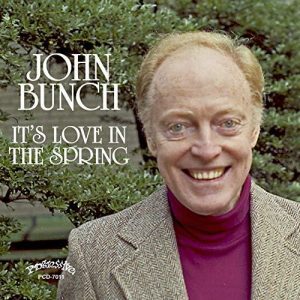 John Bunch (1921-2010) was already in his mid-thirties before he made his first recordings, but he lasted long enough to leave behind a strong musical legacy. A member of the Woody Herman Orchestra in 1957, he worked along the way with Maynard Ferguson, Eddie Condon, Tony Bennett (1966-72), Benny Goodman, Buddy Rich, and Gene Krupa. In the 1970s when the rise of Scott Hamilton and Warren Vaché launched the comeback of small-group swing, Bunch was utilized on many sessions despite being twice as old as many of the movement’s pacesetters. He led over 20 record dates of his own during 1975-2009. A flexible swing pianist who had no difficulty playing with both Ruby Braff and Louie Bellson, Bunch was an asset to every group in which he appeared.
John Bunch (1921-2010) was already in his mid-thirties before he made his first recordings, but he lasted long enough to leave behind a strong musical legacy. A member of the Woody Herman Orchestra in 1957, he worked along the way with Maynard Ferguson, Eddie Condon, Tony Bennett (1966-72), Benny Goodman, Buddy Rich, and Gene Krupa. In the 1970s when the rise of Scott Hamilton and Warren Vaché launched the comeback of small-group swing, Bunch was utilized on many sessions despite being twice as old as many of the movement’s pacesetters. He led over 20 record dates of his own during 1975-2009. A flexible swing pianist who had no difficulty playing with both Ruby Braff and Louie Bellson, Bunch was an asset to every group in which he appeared.
It’s Love In The Spring, which was recorded March 1, 1977, teams Bunch in a drumless trio with guitarist Cal Collins and bassist George Mraz on eight songs plus two previously unreleased alternate takes. The repertoire covers a wide ground, from “Struttin’ With Some Barbecue” and Hoagy Carmichael’s “Jubilee” (both of which are taken as romps) to Bud Powell’s “Celia” and “Emily.” Bunch, who contributed two originals, works very well in this setting, guitarist Collins has many fine solos, and bassist Mraz holds everything together quite well. The variety of songs and tempos make It’s Love In The Spring a very satisfying listen and an excellent example of John Bunch’s tasteful and swinging piano.
It’s Love In The Spring (Progressive PCD-7011, 10 selections, TT = 49:29) www.jazzology.com
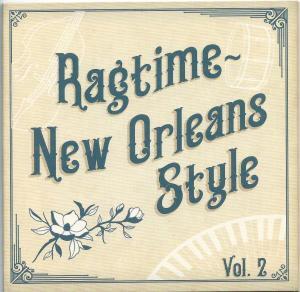 Most contemporary piano performances of ragtime from the classic era (roughly 1899-1916) are taken pretty straight with the pianist playing what is included in the sheet music. However even during the early time period, pianists often improvised variations of the themes.
Most contemporary piano performances of ragtime from the classic era (roughly 1899-1916) are taken pretty straight with the pianist playing what is included in the sheet music. However even during the early time period, pianists often improvised variations of the themes.
Certainly Jelly Roll Morton did not feel shy to infuse the compositions with his own musical personality, demonstrating in his Library of Congress recordings from 1938 how he changed Scott Joplin’s “Maple Leaf Rag” into New Orleans jazz.
Pianist Kris Tokarski, in a trio with bassist Cassidy Holden and drummer Hal Smith, demonstrated that approach throughout his earlier Solo Art CD Classic Rags – New Orleans Style.
Ragtime – New Orleans Style Vol. 2 (which has Smith and bassist Joshua Gouzy) builds upon the approach and lets one hear what Jelly Roll Morton might have sounded like interpreting pieces by not only Joplin but James Scott, Tom Turpin, Harry C. Thompson, May Aufderheide, Theron C. Bennett, George Bettsford, Joseph Lamb, Artie Matthews, and Sam Gompers. Although Morton never actually recorded in a piano-bass-drums trio, one could imagine that this is how he would have sounded around 1915 playing rags in a Los Angeles bar.
Tokarski, who has the Morton style down very well but also displays his own ideas, generally plays the rags straight at first before turning them into vehicles for early jazz improvising. Certainly these recordings of such songs as “Frog Legs Rag,” “Weeping Willow,” “Pineapple Rag,” “St. Louis Tickle,” “Black and White Rag,” and “The Cascades” are different than any other recorded versions, swinging harder than the usual renditions with Tokarski opening up each number to add spontaneous yet tasteful ideas. Jelly Roll Morton would have approved.
Ragtime – New Orleans Style Vol. 2
(Big Al Records BACD 702 15 selections, TT = 50:45) www.halsmithmusic.com
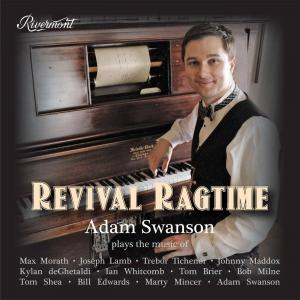 Ragtime was largely underground during 1917-72 with short-lived mini-revivals taking place every decade or so until its use in The Sting (1973) resulted in not only “The Entertainer” becoming a pop hit but leading to a complete ragtime renaissance. Since then many ragtime festivals and recordings have featured not only the classic rags but new compositions. Adam Swanson’s Revival Ragtime features his solo piano versions of a wide span of contemporary pieces in the ragtime tradition.
Ragtime was largely underground during 1917-72 with short-lived mini-revivals taking place every decade or so until its use in The Sting (1973) resulted in not only “The Entertainer” becoming a pop hit but leading to a complete ragtime renaissance. Since then many ragtime festivals and recordings have featured not only the classic rags but new compositions. Adam Swanson’s Revival Ragtime features his solo piano versions of a wide span of contemporary pieces in the ragtime tradition.
Beginning with a previously unrecorded Joseph Lamb piece from the 1920s (“Waffles”) that he had to piece together from different sources, Swanson performs compositions by Johnny Maddox, Max Morath, Trebor Tichenor, Tom Shea, Ian Whitcomb, Bob Milne, Bill Edwards & Marty Mincer, and Kylan deGheraldi, plus four by Tom Bier, and two of his own originals. While nine of the numbers were composed during the 1951-82 period, ten of the 20 pieces date from 1995 to the present.
It is a delight to hear all of this fresh and “new” material performed by a virtuoso who has a real feeling for the style. It is always a tricky balancing act (both in composing and performing ragtime) in seeking to connect newer pieces to the classic ragtime era without being overly restricted by its structures, customs, and legacy. Adam Swanson and those who wrote these highly enjoyable works succeed at making ragtime sound fresh, relevant and lively. Revival Ragtime is a joyful listening experience.
Revival Ragtime (Rivermont BSW-2245, 20 selections, TT = 63:57) www.rivermontrecords.com
SHUFFLE ALONG REVISITED
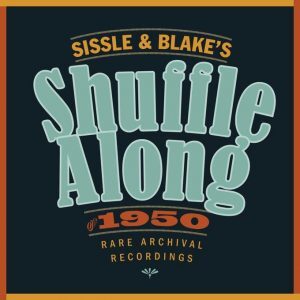 The 1921 show Shuffle Along was groundbreaking. The first African-American production to be staged on Broadway since 1910, it was the first to feature blacks singing a mature love song (“Love Will Find A Way”). Despite some stereotyped characters, the music of Eubie Blake and the lyrics of Noble Sissle made the show a surprise success with “I’m Just Wild About Harry” becoming a hit.
The 1921 show Shuffle Along was groundbreaking. The first African-American production to be staged on Broadway since 1910, it was the first to feature blacks singing a mature love song (“Love Will Find A Way”). Despite some stereotyped characters, the music of Eubie Blake and the lyrics of Noble Sissle made the show a surprise success with “I’m Just Wild About Harry” becoming a hit.
The 2016 release from the Harbinger label Sissle and Blake Sing Shuffle Along recreated the show by using a few duet recordings by Blake and Sissle from the 1920s, performances from the 1970s with an original cast member, a piano roll medley, and eight songs performed by Sissle and Blake on a previously unreleased set of demonstration recordings from 1950.
Noble Sissle always wanted to revive the show and, after getting some interest (but never enough money), in 1950 he, Blake, and singers LaVerne Hutchinson and Charlotte Holloman made a nearly hour-long demo recording of the show. The contents of the disc, released for the first time, give one a good idea of what the new show would have been.
Sissle introduces each number and relates the action and plot as it develops in addition to contributing vocals. Blake, who barely recorded at all during 1932-67, is in top form on piano, taking some impressive solos. Hutchinson and Holloman’s semi-classical singing is dated but an asset in relating the story. Truth is, the plot had barely been updated since 1921 and, while some new songs had been written (best is Blake’s playing on “Boogie Woogie Beguine”), many of the older tunes were retained.
It took until 1952 before the revival of Shuffle Along was finally staged. By then some of the story was rewritten and modernized by others, and some outside songwriters added pieces to the book. None of that helped and, while the 1921 version of Shuffle Along enjoyed 504 performances on Broadway, the revival closed after its fourth night.
Shuffle Along 1950 contains the entire demo of Shuffle Along plus a rather intriguing nine-minute disc (also never out before) called “A Tribute To Ruth King” that documents a musical party. With Sissle as MC and Blake on piano, the program features composer W.C. Handy singing and playing cornet on his “St. Louis Blues,” Sissle and Blake performing “Bandana Days” and “I’m Just Wild About Harry,” Madeline Green singing “It’s A Hit,” Billy Banks performing Blake’s “Memories Of You,” and Ruth King (on piano) dueting briefly with Blake.
All in all this is a fascinating disc.
Sissle & Blake’s Shuffle Along 1950
(Harbinger HCD 3402, 44 selections, TT = 70:20) www.harbingerrecords.com
View as a separate post
JAZZ CLASSIC OF THE MONTH
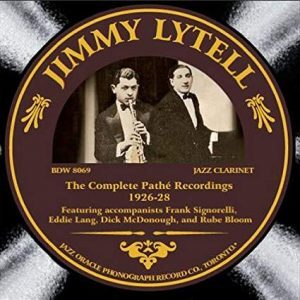 Jimmy Lytell (1904-72) may be a largely forgotten name today but he was quite busy in the 1920s. He was a member of the Original Dixieland Jazz Band (succeeding Larry Shields) for four months in 1921 when he was just 16, also worked with the Original Indiana Five that year, and in 1922 teamed up with trumpeter Phil Napoleon in the Original Memphis Five. That group recorded constantly up until the time the clarinetist left in 1926, whether under the original band name or as such similar groups as Ladd’s Black Aces, Jazzbo’s Carolina Serenaders, the Southland Five, the Cotton Pickers, Bailey’s Lucky Seven, and the Savannah Six.
Jimmy Lytell (1904-72) may be a largely forgotten name today but he was quite busy in the 1920s. He was a member of the Original Dixieland Jazz Band (succeeding Larry Shields) for four months in 1921 when he was just 16, also worked with the Original Indiana Five that year, and in 1922 teamed up with trumpeter Phil Napoleon in the Original Memphis Five. That group recorded constantly up until the time the clarinetist left in 1926, whether under the original band name or as such similar groups as Ladd’s Black Aces, Jazzbo’s Carolina Serenaders, the Southland Five, the Cotton Pickers, Bailey’s Lucky Seven, and the Savannah Six.
After that period, Lytell became a studio musician, played classical music, and spent years as a staff musician at NBC. He popped up in some jazz settings on records during 1936-42 (including with Erskine Butterfield’s Blue Boys and Dick Robertson), led six songs on a Dixieland date in 1950, joined Connee Boswell and Phil Napoleon on a hot album in 1956 and was on a Miff Mole session in 1957. But he was largely forgotten long before his 1972 death.
However during 1926-28, Jimmy Lytell was well showcased on 25 titles recorded in trios with pianist Frank Signorelli and usually Dick McDonough on guitar or banjo (two songs have Eddie Lang and five are with banjoist Lou Calabrese). Reissued on the Jazz Oracle CD Jimmy Lytell 1926-28, these are the finest recordings of his career.
The 18 songs and 7 alternate takes have Lytell mostly in the spotlight, displaying an impressive technique, a clean sound, and swinging ideas in his own original tone. While typically these performances were not reissued in full until 2012 (up to 86 years after they were recorded), they show today’s listeners that Jimmy Lytell deserves to be remembered.
Jimmy Lytell 1926-28
(Jazz Oracle BDW 8069, 25 selections, TT = 70:24) www.jazzoracle.com
In every issue of the Syncopated Times, Nights At The Turntable features reviews of CDs by classic jazz, 1920s and ’30s, New Orleans Jazz, Swing, and Dixieland artists, covering both vintage greats and some of today’s top musicians. Be sure to send a copy of your CDs to Scott Yanow, P.O. Box 1220, Lake Hughes, CA 93532 if you wish to have your recordings reviewed. If you are a musician and need liner notes, bios or press releases, feel free to drop me a line at [email protected].
